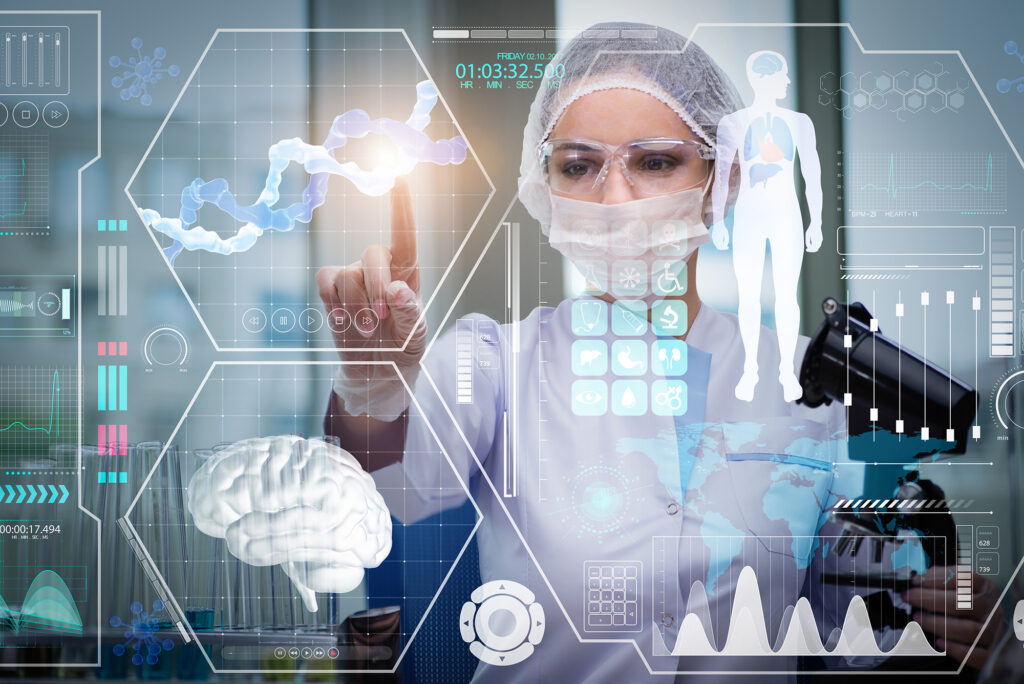By Mr. Krishnan Shrinivasan, Vice President and Managing Director, Lam Research India

The medical space is constantly improving – experimenting and innovating to arrive at the most cutting-edge procedures. The past few decades have seen unprecedented advancements in medicine due to the implementation of technology within the practice. Global estimates for healthcare spending amount to more than $8 trillion annually, with the development of medical technology devices accounting for roughly $400 billion.
Medical researchers and technologists have been integrating cutting edge technologies like artificial intelligence (AI), robotics, and augmented reality (AR), to transform the medical industry to improve outcomes and procedural access.
Better Treatments with Artificial Intelligence and Machine Learning
Perhaps the most innovative technology that has been introduced to the medical scene is AI. This emerging technology is redefining medical treatments, and is improving doctor’s capabilities to treat patients. Medical professionals equipped with AI are able to detect, evaluate, and analyze tendencies from extracted data. The personalized data set allows doctors to make better decisions and cater treatments to patients more effectively.

The impact of AI in healthcare is evidenced by the introduction of Microsoft’s Cortana – an AI digital assistant designed to extract and interpret advanced analytics. Introduced in late 2016, Microsoft partnered with Cleveland Clinic to deploy Cortana, and better assess and treat patients in intensive care. Using Cortana to design an “e -Hospital system,” healthcare professionals were able to monitor up to 100 beds at a time across six ICUs.
Medical professionals are also leveraging machine learning to make predictions and produce better outcomes. Machine learning software uses statistical analysis to examine incoming data and pinpoint patterns to formulate decisions with no human direction. Equipped with this data, doctors can better assess a patient’s risk and make more effective diagnoses with less effort. The combination of AI and machine learning give healthcare professionals unprecedented methods to better service patients. Doctors are also able to use the improved data to predict trends like survival rates, treatment success and speed of care for patients across geographical locations.
Introducing Robotics into Operating Rooms
With the introduction of robotics in medicine, surgical procedures are being revolutionized. Now, surgeons can receive real-time, 3D visuals of the operating room, while they operate the robotic arms to complete procedures. Not only have robotics improved the precision of surgeries, but they have also made surgeries less invasive and improved the recovery time for patients.
In addition to surgical robots, disinfectant robots represent one of the most innovative examples of medical technology. Hospitals around the globe are leveraging this technology to maintain a clean work environment. Hospitals begun deploying disinfection robots in operating and patient rooms to ensure the health and wellness of doctors and patients. The robots use UVC light energy to eliminate pathogens. Amid the Coronavirus outbreak, disinfectant robots have proven helpful in combating the spread and maintenance of a sterile environment.
Training with Augmented Reality
Augmented reality (AR) is permeating the medical practice both inside and outside of the operating room. A growing number of hospitals have begun using the technology to educate doctors on what to expect when treating patients. This training includes surgical visualization and disease simulations to prepare doctors to treat patients and improve outcomes.
Augmented reality in the operating room can virtually examine a patient, and show the medical staff the location of veins to draw blood or administer IV drips. AR applications also have the ability to reconstruct tumors in 3-D, giving surgeons real-time X-ray visuals without exposing the patient to radiation. Additional AR functions can provide visuals of internal organs to provide stitches, and to visualize the flow of medicine through the organ to observe the effect of a new treatment in real-time.
Semiconductors Pave the Way
Healthcare’s technical infrastructure is dependent on the innovations engineered by semiconductor manufacturing and chip technology.
Machine learning applications have high memory-bandwidth requirements and with innovation in semiconductor memory types, machine learning algorithms can analyze information faster and more thoroughly than ever before. Machine learning has had such a profound impact in medicine, that Johns Hopkins researchers received a $195,000 Rapid Response Research grant from the National Science Foundation. The grant will be used to implement machine learning to help identify COVID-19 patients most at risk of heart damage.
Predictions for the Future
The introduction of technology into the world of medicine has allowed doctors to treat their patients faster than ever and with more precision than ever. Predictions indicate these technological advancements will translate to more effective and available at-home treatments for patients. The marriage between innovative technology and medicine is reshaping the medical industry, and allowing patients to receive better, faster medical attention.
No comments:
Post a Comment